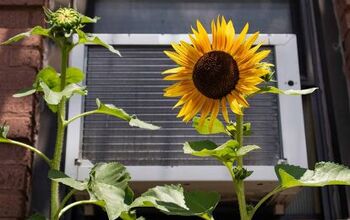Can You Leave A Candle On Overnight?

Candles are common items in every house, providing a romantic atmosphere or cozy lighting when you want to relax. You might see movies where they leave candles burning all night long during a storm. But can you leave a candle on overnight?
It’s best to blow out candles if no one will be around to keep an eye on them. Therefore, you should not leave candles burning overnight. Unattended candles can cause house fires, leading to major property damage, injuries, and worse. For the safest practice, only let candles burn continuously for four hours and let them cool completely before storing them.
If you love the look and feel of candlelight, don’t shy away from having them in your home. Instead, just ensure you follow safe practices when burning candles, or consider some alternatives.
Can You Sleep With A Candle Burning?
You should never sleep while a candle is burning. It can lead to a fire since you won’t notice if something happens. Plus, it’s not wise to leave a candle burning for a long period.
Therefore, leaving a candle on overnight is not a good idea. If you’re sleeping, you won’t notice if the flame catches a nearby curtain or something else.
Also, the closer the candle gets to the bottom, the hotter the container can get. If it reaches a certain temperature, it could ignite the wax, creating a larger flame. This flame could reach nearby paper, books, furniture, drapery, etc., leading to a house fire.
Candles also give off chemicals, and if left burning, you would breathe in these chemicals all night long. These chemicals include small amounts of carbon monoxide.
Although unlikely, it is potentially possible to get carbon monoxide poisoning from a candle if breathing it in for an extended period. Especially if you’re burning the candle in a poorly ventilated area.
How Likely Is A Candle To Start A Fire?
It is very possible for a candle to start a fire, and the risk increases exponentially if you leave the burning candle unattended. Your best chance of staying safe is to extinguish the candle before you go to sleep or when you leave the room.
How Many House Fires Are Caused By Candles?
According to the National Fire Protection Association (NFPA), there are an average of 20 reported house fires caused by candles every day. Between 2015 and 2019, candles were the cause of 2% of home fires, and 10% of those occurred while people were sleeping.
The NFPA also states that about one-third of the candle home fires started in a bedroom. Additionally, roughly 60% of the fires, or 3 out of 5, were because the candle was too close to something combustible.
The most significant months for home fires from candles are December and January, with 11% of the first occurring during this time. The biggest day for house fires from candles is Christmas day.
How Quickly Can A House Fire Start?
“In less than 30 seconds, a small flame can turn into a major fire.” – Ready.gov
Furthermore, the site goes on to say that a fire can become life-threatening in two minutes. It can also engulf an entire home in only five minutes.
The timeline of a fire puts the first 1 ½ minutes as the best time for escaping a fire. During this initial fire detection period, intense heat and smoke are still somewhat controlled. However, unless you have fire sprinklers, the following minute and a half, your chance of escape decreases drastically.
At three to five minutes, there’s what’s called flashover, during which nobody survives. Flashover is basically when everything that can catch fire does so at the same time.
You can see from these super small timeframes why leaving a candle burning overnight is a bad idea.
Can A Candle In A Glass Jar Start A Fire?
A candle inside a glass jar can start a fire. Although the flame is somewhat sheltered from surrounding objects, there are many ways a fire can occur. High amounts of fragrance from essential oils and chemicals can create larger flames and heat (more likely in cheaper, low-quality candles).
The likelihood of a fire increases if the glass is of low quality or contaminants and debris fall into the glass. If you let a candle burn down to the bottom in a glass jar, the heat inside the container rises. This increased heat could shatter or crack the glass.
What Happens If You Leave A Candle On Too Long?
Burning a candle too long can lead to a larger flame, increased fire risk, and the release of chemicals. If a candle burns too long, carbon can build up on the wick leading to a large, unstable flame.
Candles also release chemicals and carbon monoxide. Therefore, if you leave it burning for a long period, you’re breathing in these chemicals for a long time. Although many newer candles are safer in this regard, they could still cause issues if you deal with allergies or asthma.
You’ll also notice more smoke and soot when a candle burns too long. As previously mentioned, if the candle keeps burning and nears the bottom of the container, this is also a risk.
The heat builds up in the container, and the wax could ignite and start a fire. Or the container can crack or shatter, also leading to a fire.
How Long Can You Leave A Candle On?
The general rule of thumb is to only let a candle burn for up to four hours. Ideally, light a candle and burn it for at least one hour but no more than four.
The first few times you use the candle, experts recommend burning it for three to four hours to prevent tunneling. Tunneling is when the center of the candle burns down, leaving a wax ledge behind.
After you extinguish the candle, allow it to cool for at least two hours before putting it away.
Will A Candle Stop Burning On Its Own?
A candle can burn out on its own, but it’s not a guarantee, and letting it do so is dangerous. A candle needs oxygen to burn, so it could go out by itself if it doesn’t have oxygen. (This is why putting a lid on a candle extinguishes the flame.)
Or the candle can burn down, and the liquid wax could drown the flame. But if you leave a candle burning for a long time, assuming it will put itself out, it can cause many problems. As mentioned above, it can release chemicals and soot, damage the container, or cause a fire.
Tips For Burning Candles Safely
In addition to never leaving a candle unattended or burning while you sleep, practice these safety tips:
- Before you burn a cable for the first time, make sure to trim the wick to about ¼ of an inch. If the wick is too long, it can lead to an unstable flame or flare-up.
- Only burn candles in well-ventilated rooms or areas.
- Use sturdy candle holders that won’t easily tip.
- If anyone is using oxygen in the home, do not burn candles.
- Make sure to keep candles at least one foot away from anything that could burn.
- If burning multiple candles, space them out at least three inches. If they are too close, they could burn irregularly or melt each other.
- It’s a good idea to avoid using candles in a power outage and opt for battery-operated light sources instead.
- Never leave a child alone in a room with a burning candle.
- Keep candles out of reach of kids and pets.
- Do not burn a candle all the way to the bottom. Leave at least ½-inch or 2 inches for pillar candles.
- Don’t touch or move a burning candle or when there is still liquified wax.
Candle Alternatives
You can use several candle alternatives if you’re worried about a fire or need candlelight for an extended period. For example, if you want to have the atmosphere of several burning candles in your bedroom at night, use LED candles.
Many high-quality ones look very real, even flickering like a real candle flame. You can even get LED tealights. As a bonus, you can find many options with fun features like changing colors or remote operation.
For power outages, have battery-operated lanterns and flashlights available, and avoid using candles.
Relate Guide: 8 Reasons To Choose Wax Melts vs. Candles
Blow Out That Candle Before You Go To Sleep
There’s no problem with enjoying the cozy glow of a candle as you relax or unwind, or enjoy a romantic date night. However, candle safety is essential to ensure you don’t end up with a house fire. You should never leave a candle on overnight or let it burn unattended.
An unattended candle can ignite a nearby combustible item, leading to a fire since no one is there to notice. Roughly 10% of candle fires in homes start when someone is sleeping. Therefore blow out candles before you go to bed or leave the room.
Ideally, you should only let candles burn for four hours before you extinguish them. Then, let them cool before you put them away. When dealing with a power outage, use battery-operated light sources instead.
If you want to enjoy the look of candles without fear of fire, consider LED candles. Ultimately, stay smart when it comes to candles and always keep an eye on the flame.

Stacy Randall is a wife, mother, and freelance writer from NOLA that has always had a love for DIY projects, home organization, and making spaces beautiful. Together with her husband, she has been spending the last several years lovingly renovating her grandparent's former home, making it their own and learning a lot about life along the way.
More by Stacy Randall



























